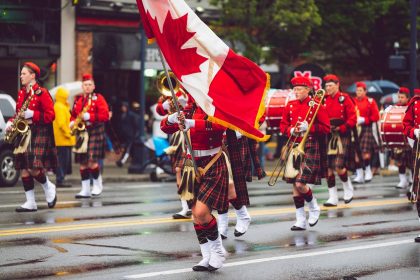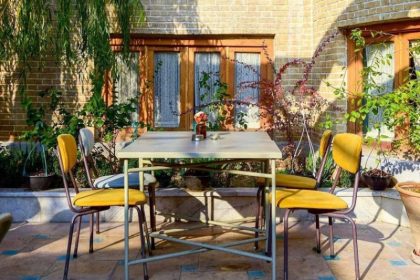Japanese gardens don’t just showcase the beauty of the seasons. Rather, they are an ideal version of nature that has amazing views in all seasons. In fact, garden design is one of the most important Japanese arts, which is partly rooted in Zen Buddhism. In these gardens, elements such as ponds and stones show both the physical aspects of the earth and abstract concepts related to spirituality. With these definitions, if you plan to travel to Japan, plan to visit the famous Japanese gardens in spring. Here you can see a list of these amazing attractions.
Japan’s famous gardens in spring
Over time, Japanese gardens have evolved for different purposes, but the traditional concept of combining the elements of rock, water, foliage, and man-made features is an integral part of creating these unique natural havens to relax and admire the four seasons.
Due to the asymmetry and meticulous approach to the design of each garden, no two gardens are alike but have one thing in common: their themes reflect the transient nature of the changing seasons. Here are some of Japan’s most famous spring gardens that offer excellent examples of all the elements that make up a traditional nihon (Japanese garden).
Hamarikyo Garden Hamarikyu Garden
Hamarikyo is one of Japan’s most beautiful gardens in spring, known not only for its cherry blossoms or maple foliage, but also for its bright pink plum trees that bloom in late winter. Once a hunting ground for the Tokugawa shogunate during the Edo period (1603-1867), this peaceful garden is now hidden in the shadow of the Shidome development.
The main attraction of the garden is the abundance of water and beautiful landscaping, which makes it look spacious. The park is surrounded by an ancient walled moat with only one entrance, over the Minamimon Bridge (you can also get to Hamarikyo by boat from Asakusa). The focal point of the garden is a large pond that includes two islands (one with a tea house) connected to the shore by attractive wooden bridges, and the other is a photogenic 300-year-old pine tree, known as the symbol of the Hamarikyo Garden.
Hamarikyo Garden visit information
- Address: 1-1 Hamarikyūteien, Chuo City, Tokyo 104-0046
- Entrance fee: $3.15
- How to get there: From Tokyo Station, take the Yokosuka Line to Shimbashi Station. Hamarikyo Garden is about one kilometer away from the station.
- Visiting hours: 9 am to 5 pm (last entry at 4:30 pm)
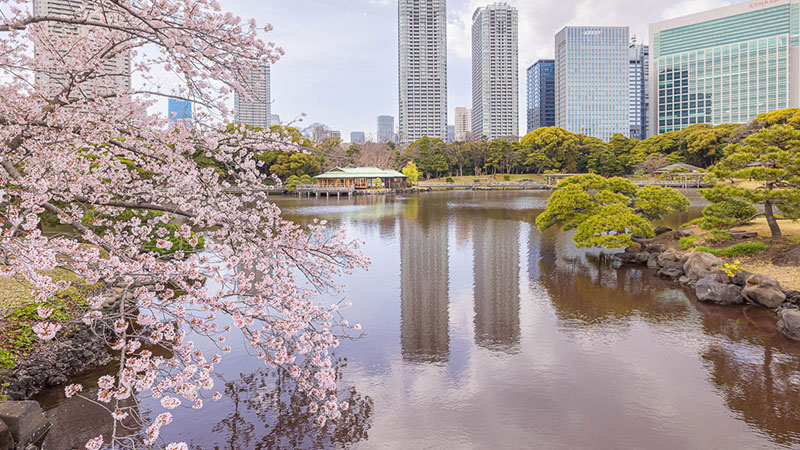
Shinjuku Gion National Garden Shinjuku Gyoen National Garden
Shinjuku Gion, best known for his appearance in Makoto Shinkai’s hit anime The Garden of Words, was originally a private property before it was opened to the public in 1946 and became one of Japan’s famous spring gardens. This complex contains some of the most beautiful gardens in the city.
Each section in the park has a different theme. Shinjukugyon offers a French garden, an English garden, a botanical greenhouse, and amomiji-yama (maple mountain), each offering a different view as the seasons change. The garden is most popular for hanami (flower viewing) during the cherry blossom season.
Information on visiting Shinjuku Gion National Park
- Address: 11 Naitomachi, Shinjuku City, Tokyo 160-0014, Japan
- Entry fee: $5
- How to get there: From Tokyo Station, take the Marunouchi Line to Shinjuku-gyoemmae Station. Shinjuku Gyoen National Garden is about 200 meters away from the station.
- Visiting hours: 9 am to 4:30 pm (October 1 – March 14), 9 am to 6 pm (March 15 – September 30), 9 am to 7 pm (July 1 to August 20); Last entry 30 minutes before closing time
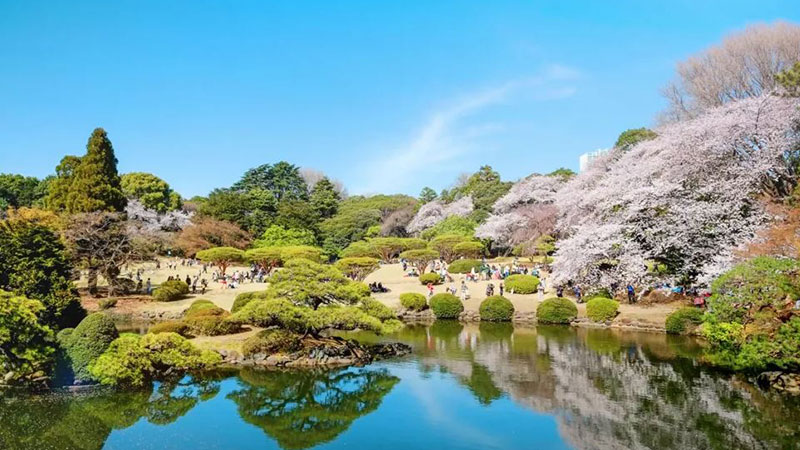
Read more: Introducing Japan’s popular tourist attractions
Ricogin garden Rikugien One of Japan’s famous gardens in spring
Rikugien is located in the urban area of Bunkyo, but is surrounded by high walls and is completely away from the hustle and bustle of the city. Rikugien is one of Japan’s most famous spring gardens, as crowds flock to its grounds to see the cherry blossoms, which are illuminated with special lights after dark.
Of course, the autumn landscape of the garden is equally enchanting due to the abundance of red maple trees. However, permanent attractions to enjoy all year round include the Fukage Chaya Teahouse, where you can enjoy a cup of matcha with wagashi (traditional Japanese sweets) for ¥850.
Information on visiting the Ricoguin Garden
- Address: 6 Chome-16-3 Honkomagome, Bunkyo City, Tokyo 113-0021, Japan
- Entrance fee: 3 dollars
How to get there: From Tokyo Station, take the Yamanote Line to Komagome Station. Rikugien Garden is about 650 meters away from the station.
Kiyosumi Garden Kiyosumi Garden
Kiyosumi Teien, known for its large pond, has walking trails that lead to sights such as a water garden with sparkling koi fish, turtles and birds. It is decorated. The stone slabs of Kiyosumi Ten, which surround the complex, are another reason why Kiyosumi is one of the famous spring gardens in Japan.
Yataro Iwasaki, the shipping investor and founder of Mitsubishi, used his steamships to collect beautiful stones from all over Japan and decorate the garden with them. Large stepping stones called isowattari line the shallower parts of the pond, where you can see the reflection of the trees on the water.
Kiyosumi Garden visit information
- Address: 3 Chome-3-9 Kiyosumi, Koto City, Tokyo 135-0024, Japan
- Entrance fee: 1.5 AUD
- How to get there: From Tokyo Station, take the Marunouchi Line to Otemachi Station and then take the Hanzomon Line to Kiyosumi-shirakawa Station. It is about 400 meters away from Kiyosumi Garden.
- Visiting hours: every day from 9 am to 5 pm
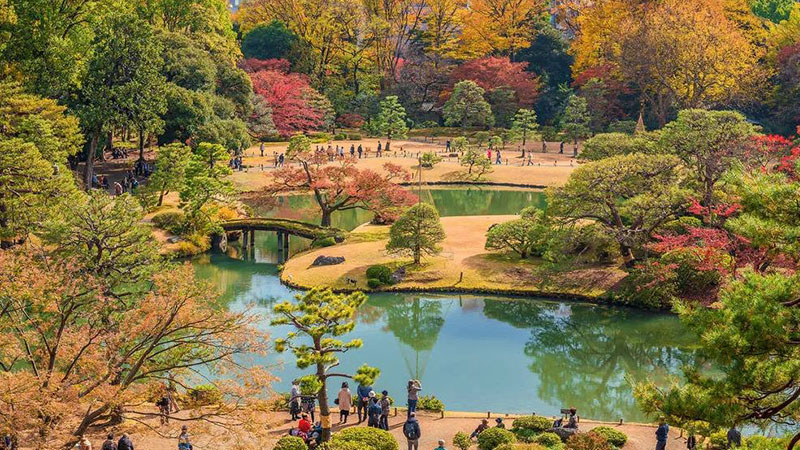
Read more: Everything about the Japan Light Festival
Koishikawa Korakuen Garden Koishikawa Korakuen One of Japan’s famous gardens in spring
Despite being right next to the Tokyo Dome City amusement park, Koishikawa Kurakuen has such a peaceful atmosphere that you almost forget you’re in the center of a big city while exploring it. This garden was built for the first time in 1629. Now only a quarter of its original size remains, but it is still beautiful and decorated with a wide range of walkways, bridges, hills and landscapes (often miniatures of famous works).
Koishikawa Kurakuen Garden Visit Information
- Address: 1 Chome-6-6 Koraku, Bunkyo City, Tokyo 112-0004, Japan
- Entrance fee: 3.15 AUD
- How to get there: From Tokyo Station, take the Marunouchi Line to Korakuen Station. Koishikawa Korakuen Garden is about 190 meters away from the station.
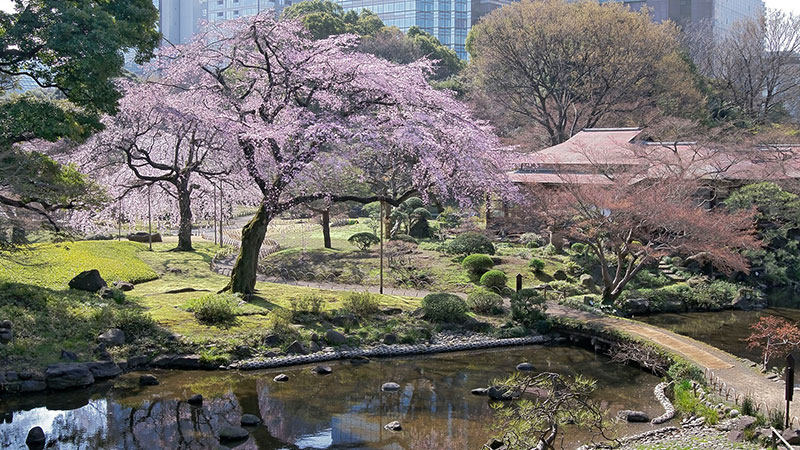
Tonogayatu garden Tonogayato Garden
This garden is located in Kokubunji and as one of Japan’s famous spring gardens, it has a history to read. The main garden space was built between 1913 and 1915 on the grounds of a villa for the vice president of the Manchurian Railway, and later purchased by Mitsubishi founder Yataro Iwazaki in 1929, who added a teahouse to the grounds.
The beauty of Tonogayatu lies in the diversity of its landscapes, which include a waterfall that leads to a natural spring, as well as bamboo groves and forests. As you know, bamboo is a part of Japanese culture.
Tonogayatu garden visit information
- Address: 2 Chome-16 Minamicho, Kokubunji, Tokyo 185-0021, Japan
- Entrance fee: $2
- How to get there: From Tokyo Station, take the Chuo Line to Kokubunji Station. Tonogayatu Garden is about 270 meters away from the station.
- Visiting hours: 9 am to 5 pm (last entry at 4:30 pm) every day
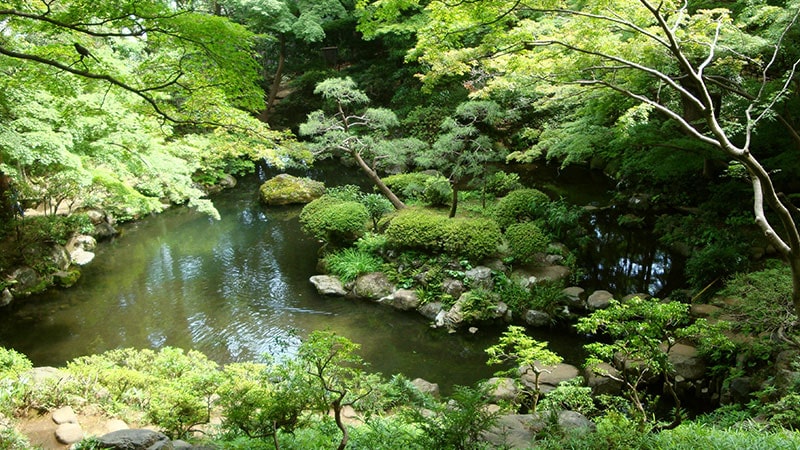
Read more: Japanese cities Full acquaintance
Hokokuji Garden Houkoku-ji
Hokokuji is located outside of the city, but it’s worth the hour-long train ride from Tokyo for its stunning scenery, shrines, and historic temples. The Hokokuji Temple and Garden complex is especially famous for its small but enchanting bamboo groves. You can also enjoy a cup of matcha with Japanese sweets (600 yen) in this collection.
Entering the forest, you’ll find three shallow caves said to be the resting places of Kamakura priests and samurai, including Ituki and Yoshihisa Ashikaga. The path leading to the temple takes you through a Zen rock garden famous for its karnsoi (dry landscape) with intricate pebbles.
Hokokuji Garden Visit Information
- Address: 2-7-4 Jomyoji, Kamakura-shi
- Entrance fee: 3 dollars
- How to get there: Kamakura Station (Yokosuka, Shonan-Shinjuku, Enoshima Electric Railways)
- Visiting hours: every day from 9 am to 4 pm
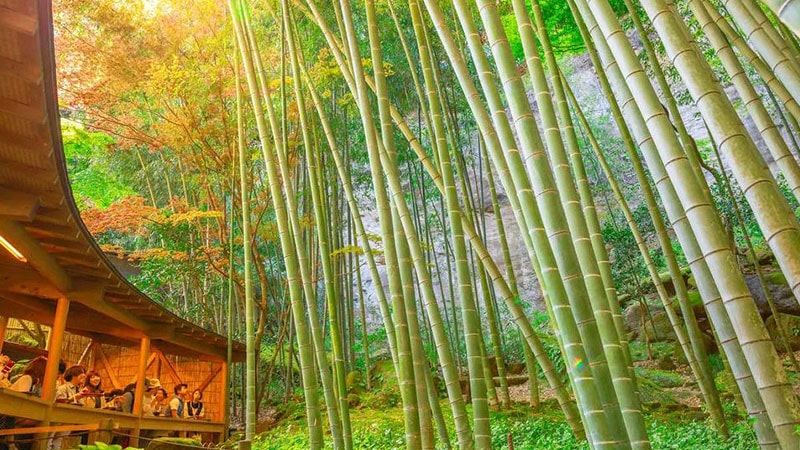
Opportunity to visit the famous gardens of Japan in spring in Nowruz 1404 with Setara Vank Airlines Agency
Spring season with its magical and spectacular nature is the best time to travel to Japan! In this season, Japanese cherry blossoms are at their most beautiful, and you have the opportunity to enjoy seeing pink cherry and plum blossoms by visiting Japanese gardens. The Japan tours of Setare Vanak Air Agency in Nowruz 1404 include stays in Tokyo, Hakone and Osaka. We have planned the reservation of 4 and 5 star hotels in Japan tour. In this way, those interested in this destination can spend their Nowruz 1404 holidays in Japan with any budget.
final word
The famous gardens of Japan in spring with cherry blossoms (sakura) are a symbol of fleeting beauty and harmony with nature. With carefully designed gardens, tranquil lakes, wooden bridges and flowering trees, these gardens create a dreamy atmosphere that is both relaxing and inspiring! Visiting these gardens is not only an opportunity to experience the beauty of nature, but also a journey into the depth of Japanese culture and philosophy, which respects nature and life.
Copying of the contents of Setare Vanak Airline Agency is prohibited only by mentioning the source.
RCO NEWS











